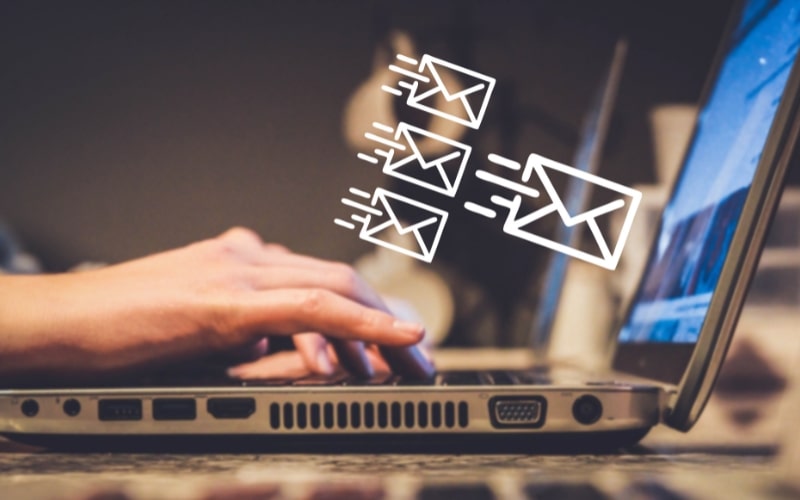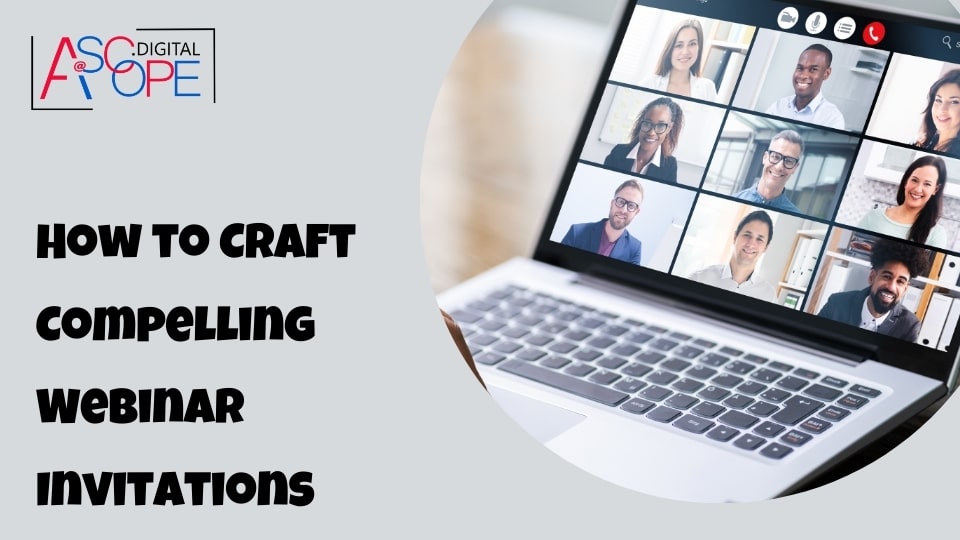Webinars have become an integral part of the B2B marketing landscape. They offer a platform to share knowledge, showcase expertise, and engage with an audience in real-time. However, the success of a webinar largely depends on the number of attendees, and that starts with crafting compelling webinar invitations. A well-written invitation can be the difference between a full house and an empty room. This article will delve into the art and science of creating effective webinar invitations that not only grab attention but also drive action.
Understanding the Importance of Webinar Invitations

Webinar invitations are often the first point of contact between you and your potential attendees. They set the tone for your event and can significantly influence the decision-making process of your audience. A compelling invitation can spark interest, convey the value of your webinar, and encourage recipients to register. Conversely, a poorly crafted invitation can lead to low attendance, wasted resources, and missed opportunities.
Key Elements of a Compelling Webinar Invitation
To craft an effective webinar invitation, it’s essential to focus on several key elements:
1. Attention-Grabbing Subject Line
The subject line is the first thing your recipients will see, and it plays a crucial role in determining whether they will open your email. A great subject line should be concise, relevant, and intriguing. It should hint at the value your webinar offers without giving away too much. For example, “Unlock the Secrets to B2B Success: Join Our Exclusive Webinar” is more likely to grab attention than “Join Our Webinar on B2B Marketing.”
2. Personalization
Personalization can significantly enhance the effectiveness of your email marketing campaigns. Addressing your recipients by their first name and tailoring the content to their specific needs and interests can make your invitation more engaging and relevant. Use data from previous interactions, such as past webinar attendance or content downloads, to personalize your message.
3. Compelling Value Proposition
Your invitation should clearly articulate the benefits of attending your webinar. Explain what your audience will learn, how it will help them, and why they should care. Use bullet points to highlight key takeaways and include testimonials or quotes from past attendees if possible. For example, “Learn how to increase your B2B sales by 30% in just three months” is a powerful value proposition that can motivate recipients to register.
4. Engaging Visuals
Visuals can make your invitation more attractive and easier to digest. Use high-quality images, infographics, and videos to convey your message. Include a professional and appealing banner that represents your brand and the theme of your webinar. Visuals should complement your text and not overwhelm it.
5. Clear Call to Action
Your call to action (CTA) should be clear, concise, and compelling. It should tell your recipients exactly what you want them to do, such as “Register Now” or “Save Your Spot.” Use contrasting colors to make your CTA button stand out and place it prominently within your email. Including multiple CTAs throughout your email can also increase the chances of conversion.
Crafting the Perfect Webinar Invitation Email

Now that we’ve covered the key elements of a compelling webinar invitation, let’s put them into practice with a step-by-step guide to crafting the perfect webinar invitation email.
Step 1: Create a Catchy Subject Line
Your subject line should be short, engaging, and relevant. Aim for a subject line that piques curiosity and communicates the value of your webinar. For example:
- “Discover the Future of B2B Marketing: Free Webinar”
- “Join Us for an Exclusive Webinar on B2B Strategies”
- “Unlock B2B Success with Our Expert-Led Webinar”
Step 2: Personalize Your Greeting
Use your recipient’s first name to create a more personalized and engaging greeting. For example:
- “Hi [First Name],”
- “Dear [First Name],”
Step 3: Highlight the Value Proposition
Clearly explain the benefits of attending your webinar. Use bullet points to highlight key takeaways and make your message easy to scan. For example:
- “During this webinar, you will learn:”
- “How to increase your B2B sales by 30% in just three months”
- “Proven strategies for optimizing your email marketing campaigns”
- “Tips for engaging and retaining your B2B audience”
Step 4: Include Engaging Visuals
Incorporate high-quality images and a professional banner that aligns with your brand and the theme of your webinar. For example:
- A banner at the top of your email featuring the webinar title, date, and time
- An infographic summarizing the key points of your webinar
- A video teaser featuring your webinar speaker
Step 5: Add a Clear Call to Action
Use a clear and compelling CTA to encourage recipients to register for your webinar. For example:
- “Register Now”
- “Save Your Spot”
- “Join Us for This Exclusive Event”
Include your CTA multiple times throughout your email and make sure it stands out visually.
Best Practices for Sending Webinar Invitations
In addition to crafting a compelling invitation, there are several best practices to keep in mind when sending webinar invitations:
1. Segment Your Audience
Segmenting your audience allows you to tailor your message to different groups of recipients. Use data such as industry, job title, and past interactions to create targeted segments. This can increase the relevance and effectiveness of your invitation.
2. Timing Is Key
Timing is crucial when sending webinar invitations. Send your initial invitation at least two weeks before the webinar date, followed by reminder emails one week before, three days before, and on the day of the webinar. Avoid sending invitations on Mondays and Fridays, as these are typically the least effective days for email engagement.
3. Use a Professional Email Platform
Using a professional email marketing platform can help you create, send, and track your webinar invitations more effectively. Look for a platform that offers email templates, automation features, and detailed analytics.
4. Test and Optimize
Testing different elements of your invitation, such as subject lines, visuals, and CTAs, can help you identify what works best for your audience. Use A/B testing to compare different versions of your email and optimize your approach based on the results.
Examples of Effective Webinar Invitations
To further illustrate the principles discussed above, let’s look at a few examples of effective webinar invitations:
Example 1: HubSpot
HubSpot is known for its effective email marketing campaigns, and its webinar invitations are no exception. A typical HubSpot webinar invitation might feature a catchy subject line, such as “Unlock the Secrets to Inbound Marketing Success.” The email would include a personalized greeting, a clear value proposition highlighting what attendees will learn, engaging visuals, and a prominent CTA button.
Example 2: LinkedIn
LinkedIn’s webinar invitations often focus on the professional development aspect of their webinars. A subject line like “Enhance Your Professional Skills with Our Free Webinar” grabs attention, while the email content emphasizes the practical benefits of attending. LinkedIn’s invitations also feature high-quality images, concise bullet points, and a clear CTA.
Example 3: Salesforce
Salesforce uses its webinar invitations to showcase thought leadership and industry expertise. A subject line such as “Join Our Expert-Led Webinar on CRM Best Practices” immediately communicates the value of the event. The email content includes a detailed agenda, speaker bios, and multiple CTAs, all designed to drive registrations.
Common Mistakes to Avoid
While crafting webinar invitations, it’s essential to avoid common pitfalls that can reduce their effectiveness. Here are a few mistakes to watch out for:
1. Overloading with Information
While it’s important to convey the value of your webinar, avoid overwhelming your recipients with too much information. Keep your email concise and focused, and use bullet points to highlight key takeaways.
2. Neglecting Mobile Optimization
Many recipients will view your email on a mobile device, so it’s crucial to ensure your invitation is mobile-friendly. Use a responsive design, large fonts, and easily clickable CTAs to enhance the mobile experience.
3. Using Generic Subject Lines
A generic subject line can easily get lost in a crowded inbox. Avoid vague or boring subject lines and focus on creating ones that are specific, relevant, and intriguing.
4. Failing to Follow Up
Sending a single invitation email is rarely enough to drive high attendance. Use a series of reminder emails to keep your webinar top of mind and encourage last-minute registrations.
Enhancing Your Webinar Invitations with Advanced Strategies

To take your webinar invitations to the next level, consider incorporating advanced strategies that can further boost engagement and registrations:
1. Interactive Elements
Incorporate interactive elements, such as polls or quizzes, to make your invitation more engaging. For example, you could include a short quiz related to the webinar topic and reveal the results during the event. This can create a sense of anticipation and encourage recipients to register.
2. Exclusive Offers
Offering exclusive benefits to webinar attendees can increase the perceived value of your event. For example, you could provide access to a special report, a discount on your services, or a free consultation for those who attend the webinar.
3. Social Proof
Including social proof, such as testimonials from past attendees or endorsements from industry experts, can enhance the credibility of your webinar. Highlighting positive feedback and showcasing the value others have gained from your webinars can encourage more recipients to register.
4. Personalized Videos
Personalized videos can add a unique and engaging touch to your webinar invitations. Use a tool that allows you to create personalized video messages addressing your recipients by name and inviting them to the webinar. This can create a more personal connection and increase the likelihood of registration.
Measuring the Success of Your Webinar Invitations
To continually improve your webinar invitations, it’s essential to measure their success and analyze the results. Key metrics to track include:
1. Open Rate
The open rate indicates the percentage of recipients who opened your email. A high open rate suggests that your subject line was effective in grabbing attention.
2. Click-Through Rate (CTR)
The click-through rate measures the percentage of recipients who clicked on a link or CTA in your email. A high CTR indicates that your content and CTAs were compelling and relevant.
3. Conversion Rate
The conversion rate measures the percentage of recipients who registered for your webinar after clicking on your CTA. This is the ultimate indicator of the effectiveness of your webinar invitation.
4. Bounce Rate
The bounce rate indicates the percentage of emails that were not delivered successfully. A high bounce rate can suggest issues with your email list quality or delivery system.
5. Unsubscribe Rate
The unsubscribe rate measures the percentage of recipients who opted out of your email list after receiving your invitation. A high unsubscribe rate can indicate that your content is not meeting the expectations of your audience.
Conclusion
Crafting compelling webinar invitations is both an art and a science. By focusing on key elements such as attention-grabbing subject lines, personalization, compelling value propositions, engaging visuals, and clear CTAs, you can create invitations that drive registrations and contribute to the success of your webinars. Remember to segment your audience, time your invitations strategically, use a professional email platform, and continually test and optimize your approach. By avoiding common mistakes and incorporating advanced strategies, you can enhance the effectiveness of your webinar invitations and achieve better results.
Thus, improving traffic and sales for your website. Read more on the other reasons why your website isn’t getting traffic. With the right approach, your webinar invitations can become powerful tools in your B2B email marketing arsenal, helping you to engage with your audience, share valuable insights, and achieve your marketing goals


